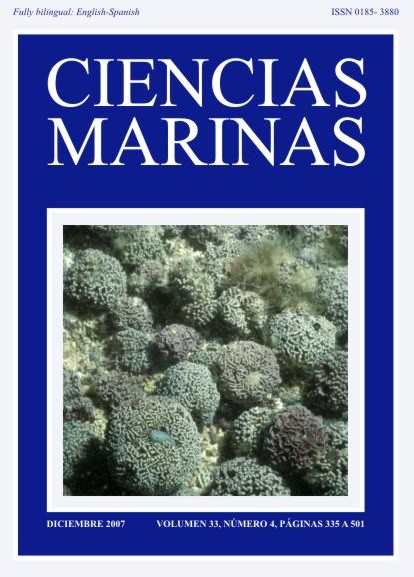Rhodolith detritus impounded by a coastal dune on Isla Coronados, Gulf of California
Main Article Content
Abstract
Sand from a small dune on the southwest side of Isla Coronados with an estimated volume of 30,000 m3 is enriched as much as 86.5% by calcium-carbonate detritus from beached rhodoliths. Elsewhere in the Gulf of California, coastal sand dunes often occur on the north sides of islands or north-facing peninsular shores, and calcium-carbonate input is more commonly linked to bivalve mollusks from adjacent sand flats. The local calcium-carbonate budget for the west-facing shore of Isla Coronados must take into account how many rhodoliths of a given size are required to build a sand dune with a known composition and volume. To this end, 135 whole rhodoliths were collected from above the tide line at Punta El Bajo, across from Isla Coronados, on the peninsular mainland. One cubic meter is calculated to accommodate 8640 whole rhodoliths with an average diameter of 5 cm and an average sphericity of 0.86. The age of a rhodolith this size could be several decades. Through stages, the sample rhodoliths were crushed to a maximum grain size ≤ 2.38 mm in diameter (–1.25ø equivalent), and the product was used to estimate the proportion required to generate 1 m3 of pure carbonate sand. Accounting for 2% loss throughout the reduction process, about 16,265 crushed rhodoliths are needed to produce 1 m3 of carbonate sand. Thus, a 30,000-m3 dune requires approximately 488,000,000 rhodoliths to generate 86% of the dune´ s volume. Dunes of this kind may be rare, but the computation is applicable to other rhodolith-derived dunes in the Gulf of California.
Downloads
Article Details
This is an open access article distributed under a Creative Commons Attribution 4.0 License, which allows you to share and adapt the work, as long as you give appropriate credit to the original author(s) and the source, provide a link to the Creative Commons license, and indicate if changes were made. Figures, tables and other elements in the article are included in the article’s CC BY 4.0 license, unless otherwise indicated. The journal title is protected by copyrights and not subject to this license. Full license deed can be viewed here.

